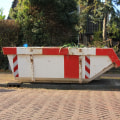Forestry mulching is a land-clearing method that uses specialized equipment to grind trees, brush, and vegetation into a natural mulch layer that remains on-site. Unlike traditional clearing methods that strip the topsoil bare, forestry mulching leaves behind organic material that decomposes and enriches the soil. This can be a double-edged sword when it comes to grass regrowth. On one hand, the mulch layer acts as a natural weed barrier and moisture retainer, which supports long-term soil health. On the other hand, the thickness of the mulch can initially make it harder for grass seeds to make direct contact with the soil, which is crucial for germination. Understanding this balance is essential when considering whether grass will grow successfully after forestry mulching.
Grass Growth Depends on Mulch Thickness and Soil Conditions
In most cases, grass will grow after forestry mulching if the mulch is not too thick and if the soil beneath is fertile and well-drained. If the mulch layer exceeds 3 inches, it may block sunlight and prevent seed-to-soil contact, hindering grass growth. Thinner mulch—around 1 to 2 inches—can actually be beneficial, retaining moisture and protecting seeds from erosion. Additionally, the condition of the soil before and after mulching plays a critical role. Soil that is compacted or nutrient-depleted will need to be aerated and possibly amended with lime, compost, or fertilizer to promote healthy grass development. If the mulched material includes acidic woods like pine, adjusting the soil pH may be necessary before seeding.
Timing and Weather Conditions Are Key
Grass seed growth after forestry mulching is also influenced by timing and weather conditions. Ideally, seeding should take place during the spring or early fall when temperatures are moderate and rainfall is more consistent. These conditions promote better germination rates and help establish root systems before extreme heat or cold sets in. If seeding is attempted during drought or intense summer heat, even well-prepared mulch-covered areas may struggle to support new grass. Similarly, planting just before a heavy rainy season can result in seed runoff or washout, particularly on sloped terrain. Proper planning around regional weather patterns ensures a better chance for successful regrowth.
Proper Preparation Enhances Grass Germination
To boost your chances of growing grass after forestry mulching, a bit of site preparation goes a long way. Start by raking or lightly tilling areas where the mulch is thick to expose more soil. In some cases, removing part of the mulch layer may be necessary to achieve sufficient seed-to-soil contact. After prepping the area, choose a grass seed that’s appropriate for your region’s climate and soil type. Broadcast the seed evenly, lightly rake it into the top layer of soil, and apply a starter fertilizer if needed. Water the area consistently until germination is well established. Mulch can actually help retain the moisture needed for this process, so as long as it’s not overly dense, it may serve as a benefit.
Long-Term Benefits of Forestry Mulching for Grass
One of the biggest advantages of forestry mulching is that it sets the stage for long-term grass and vegetation growth without the use of harsh chemicals or disruptive grading. The decomposing mulch gradually adds organic matter back into the soil, improving its structure and fertility over time. This creates a healthier root environment for grass and other plants. As the mulch breaks down, it also reduces weed pressure, giving new grass a better chance to thrive without as much competition. It’s similar in principle to how residential roofing systems are designed not just to cover but to preserve and protect what's underneath—forestry mulching shields and nurtures the soil rather than stripping it.
Managing Expectations and Knowing When to Reapply
It’s important to manage expectations when planting grass after forestry mulching. Initial growth might be patchy, especially in heavily shaded or sloped areas. However, with proper care—including reseeding sparse zones, monitoring soil moisture, and possibly applying a second round of fertilizer—you can encourage fuller coverage over time. Some landowners even use fast-growing cover crops as a transitional solution to quickly stabilize the soil before committing to a permanent grass variety. Additionally, if the mulch breaks down faster than expected or if erosion becomes a concern, you may need to reapply a thin mulch layer to protect new growth and keep the area moist.
Conclusion: Yes, But with the Right Approach
In conclusion, yes—grass can and often does grow after forestry mulching, but success depends on mulch management, soil preparation, timing, and ongoing care. While it’s not as instant as laying sod or planting in pre-tilled garden beds, the process rewards patience and smart planning. Forestry mulching offers an eco-friendly way to clear land and foster long-term growth without compromising the integrity of the soil. If you take the necessary steps to ensure good seed-to-soil contact and provide the right conditions, your cleared space can transition smoothly into a healthy, green landscape.



